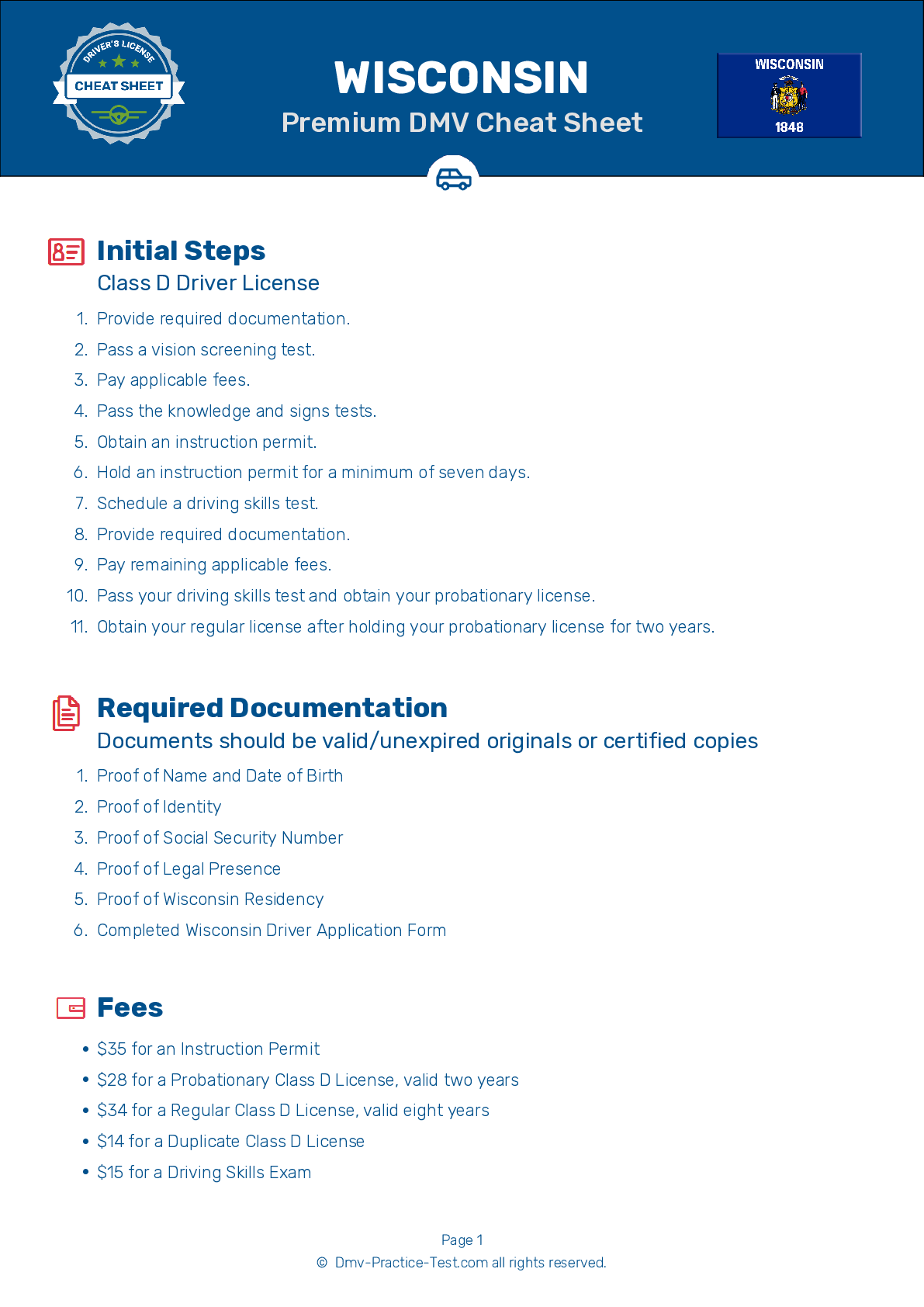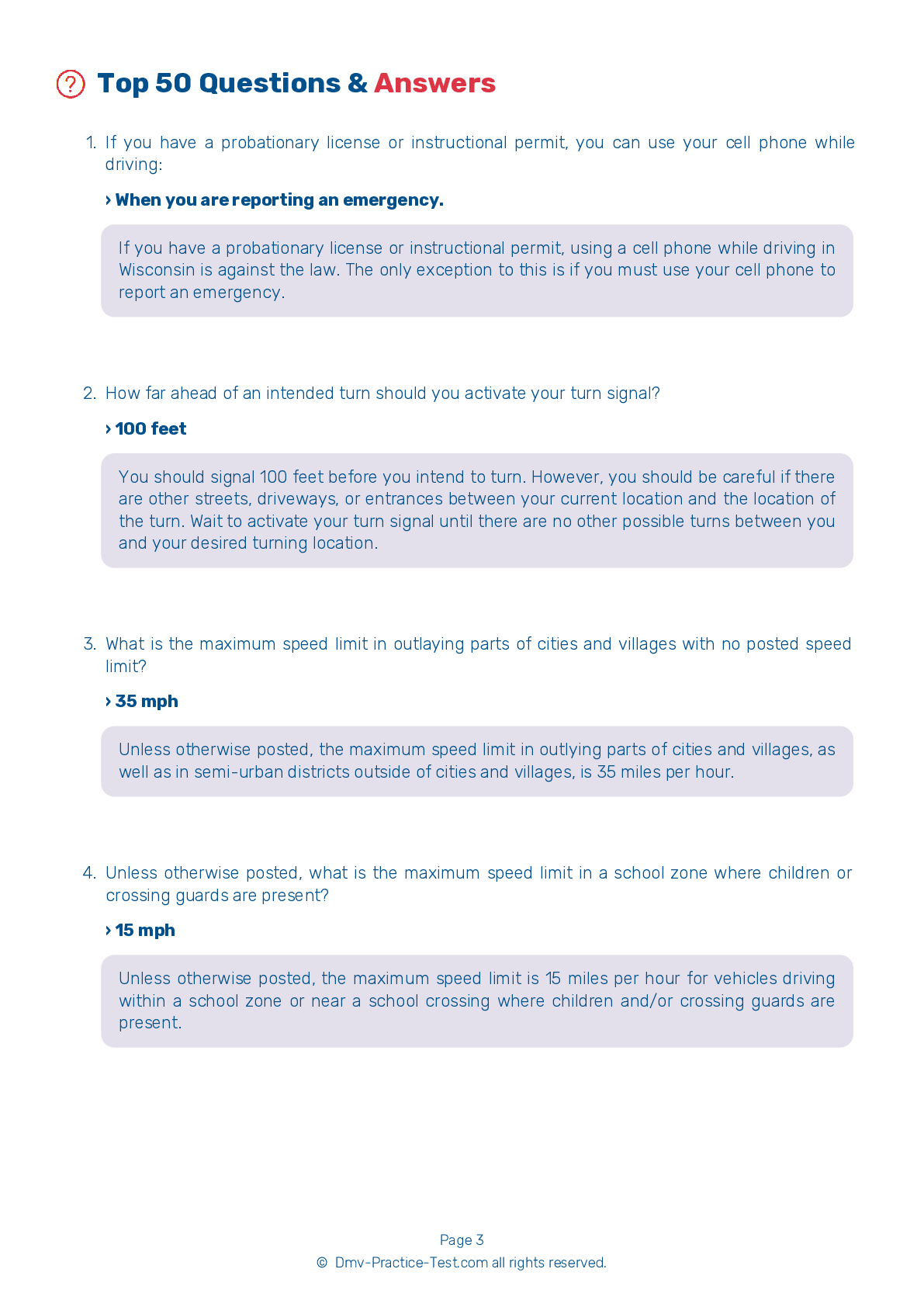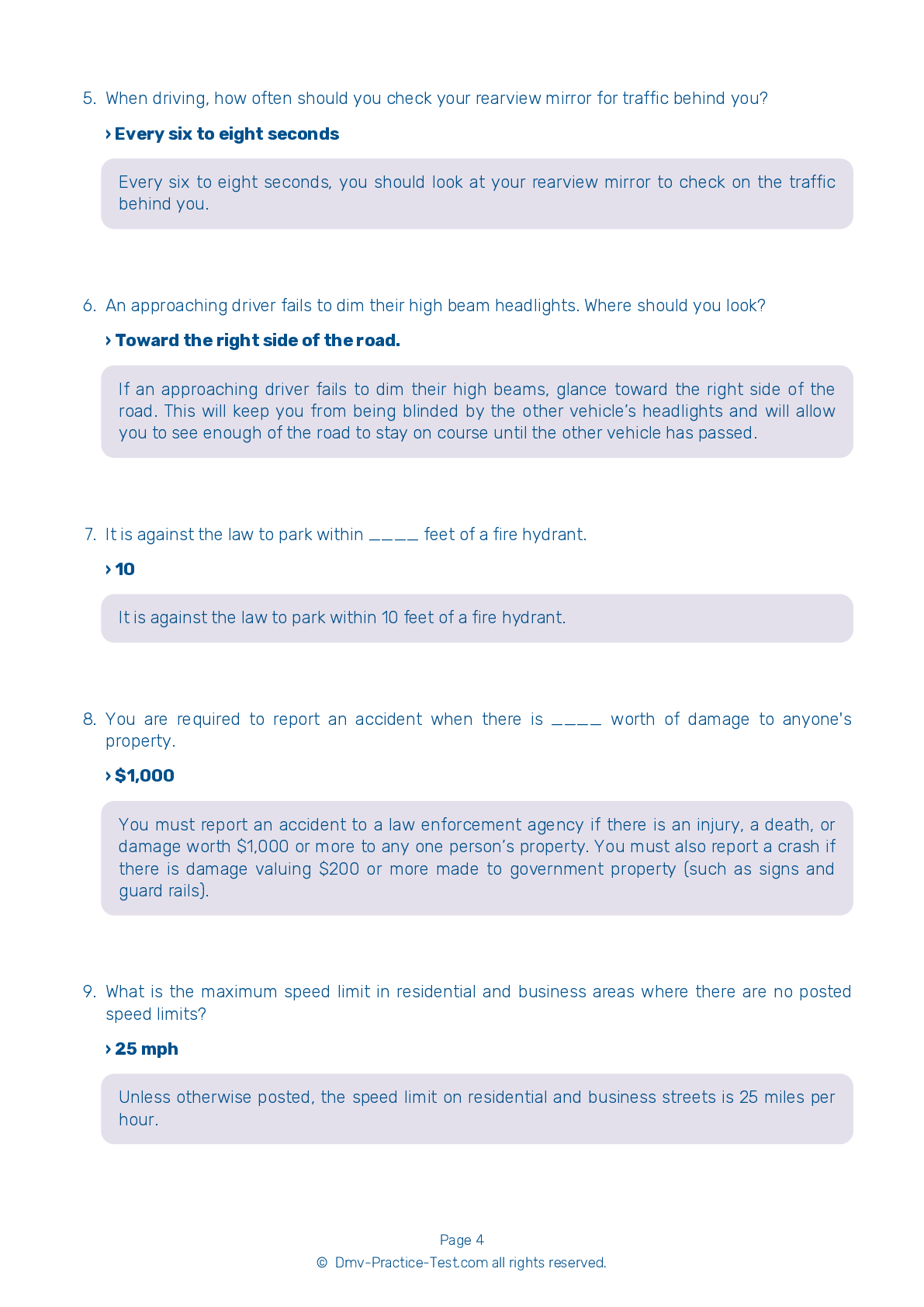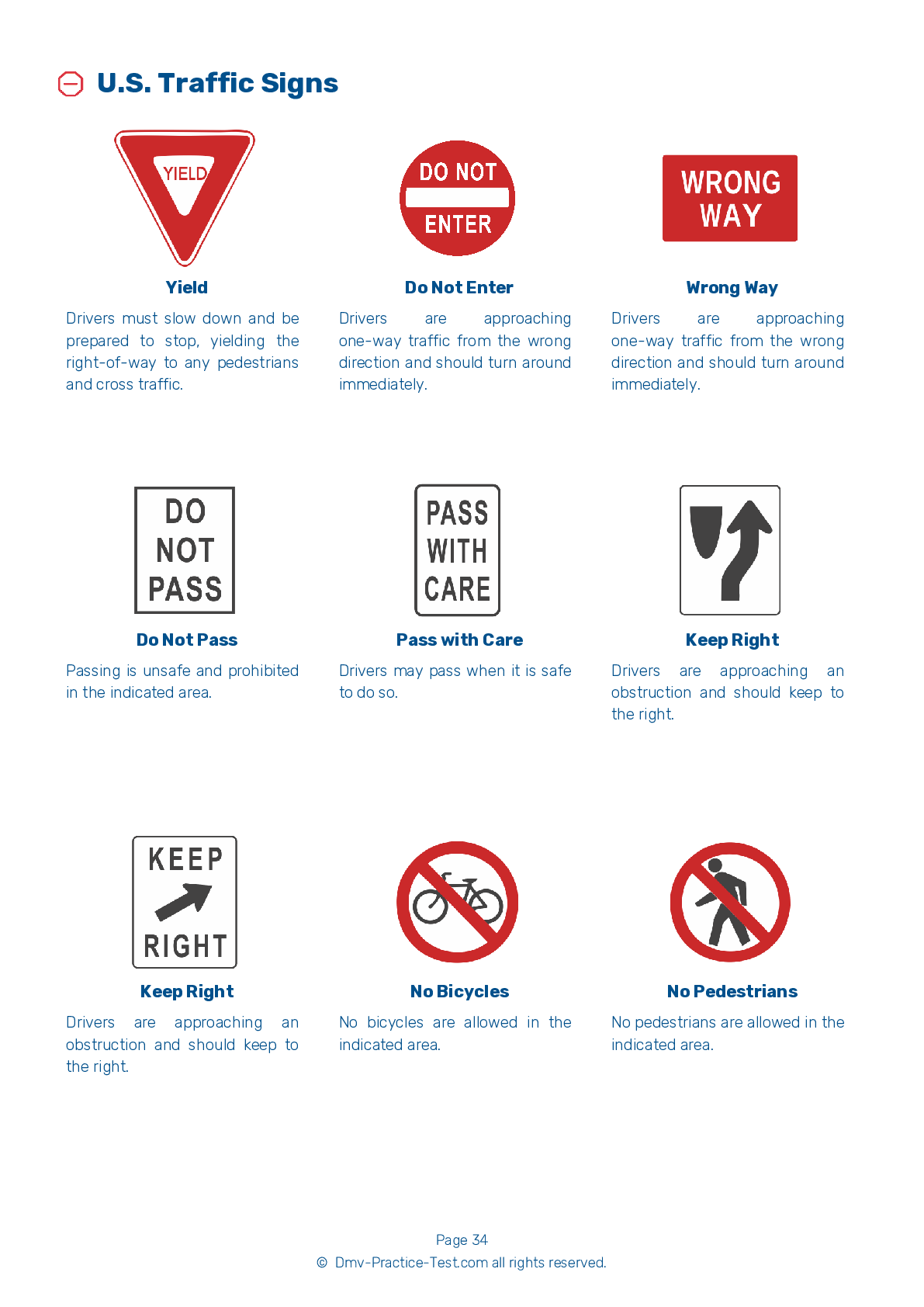FREE Wisconsin DMV Practice Test #20 Page 7 of 7
The Wisconsin DMV practise examinations have been updated for January 2025. It includes questions based on the Wisconsin Driver Handbook's most significant traffic signals and legislation for 2025. Use actual questions that are very similar (often identical!) to the DMV driving permit test and driver's licence exam to study for the DMV driving permit test and driver's licence exam.
On the practise exam, each question gets a tip and explanation to help you remember the concepts. The written component of the official Wisconsin DMV test will include questions about traffic rules, traffic signs, and driving statutes, as well as knowledge from the Driver Handbook.
To obtain a passing grade, you must correctly answer 40 of the 50 questions. Use the practise exam provided by the Wisconsin Department of Motor Vehicles to help you prepare for your instruction permit or driver's licence.
The DMV exam is available in several languages.
Using any kind of testing assistance will result in an automatic fail, and the DMV may take additional action against your driver's licence, so stay away from it.
43 . Two solid yellow lines on the pavement mean:
Yellow lines tell you that the traffic on the other side of the lines is moving in the opposite direction. You should never cross two solid yellow lines to pass from either direction.
44 . This road sign means:

Orange is the standard color for work zone activity. If you see orange signs, cones, or barrels while driving, stay alert and be prepared for unexpected driving conditions. This sign alerts drivers to an upcoming flagger whose directions should be obeyed by all drivers.
45 . If a tire suddenly blows out while you are driving, you should:
If you experience a sudden tire blowout, do not panic. Grasp the steering wheel firmly and take your foot off the accelerator to allow the vehicle to roll to a stop. Lightly apply the breaks when it is safe to do so. Do not move to the shoulder of the road until the car has slowed considerably.
46 . You are coming to an intersection with a flashing red light. You should:
A flashing red traffic light means the same thing as a stop sign. You must come to a complete stop, yield to other traffic and pedestrians, and then proceed when it safe to do so.
47 . This sign means:
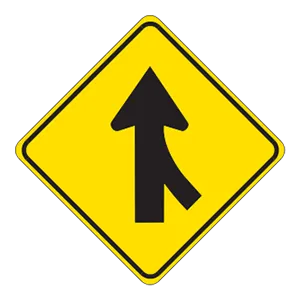
Warning signs prepare drivers for upcoming road conditions and hazards and are usually yellow with black markings. This sign alerts drivers to potential traffic merging from the right. Drivers should prepare to allow the traffic to merge safely.
48 . This sign indicates that:
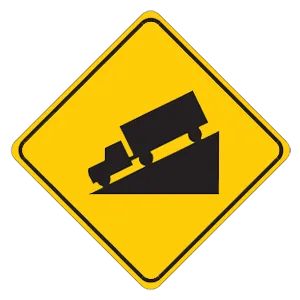
This sign warns that there is a steep hill or downgrade ahead.
49 . Large trucks are likely to lose speed when:
Because large trucks require more time to accelerate than smaller vehicles, trucks can lose speed driving up long or steep hills. Be cautious when driving behind a large truck and be sure to give the vehicle additional space, especially when driving on an incline.
50 . If your vehicle has a mechanical problem:
If your vehicle breaks down on a highway, make sure other drivers can see it. Get your vehicle off the road and away from traffic if at all possible and turn on your emergency flashers to show that you are having trouble.
See the exact questions that will be on the 2025 Wisconsin DMV exam.
99.2% of people who use the cheat sheet pass the FIRST TIME
LT gives us an insight on how the cheat sheet provided her with all the study questions she needed before taking her test.
Joe initially studied with the handbook and failed his test, he eventually found us online, studied and pass his test the first time around.
